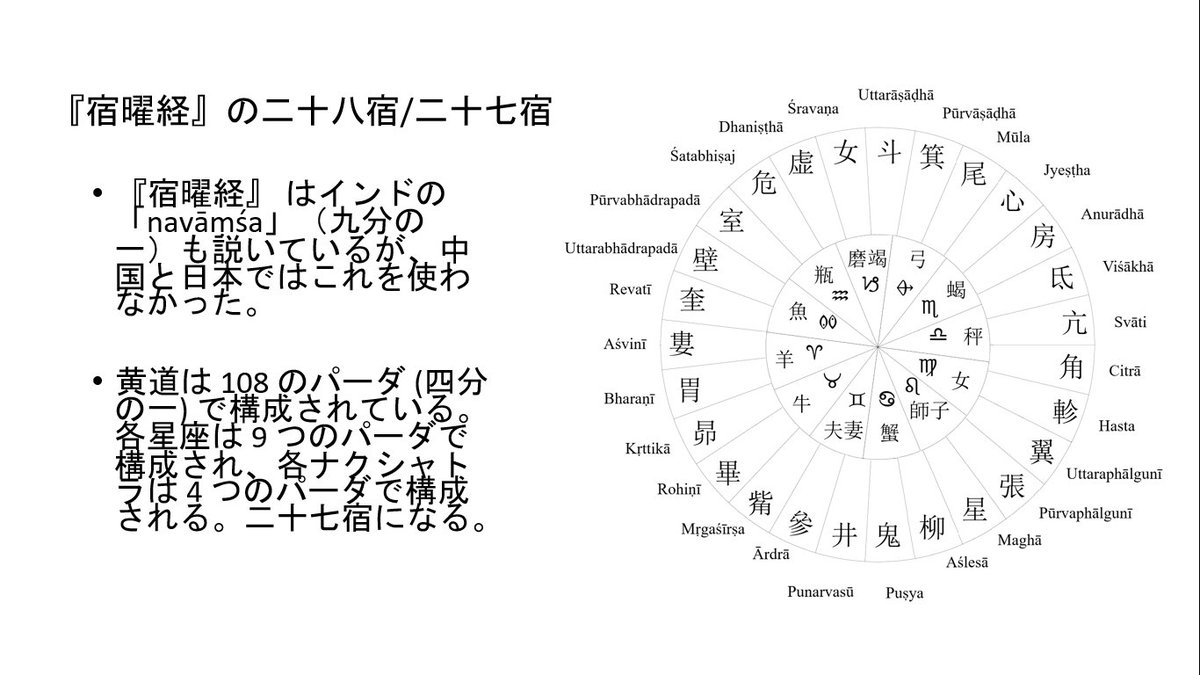I gave a talk in Japanese yesterday. I'd like to highlight an interesting point. There were multiple "nakṣatras" in Japan. The horoscope of 1113 displays the twenty-eight Chinese lunar stations, which generally are equated to Indian nakṣatras, but they are different. 1/5 

The Chinese lunar stations (right), which were also used in Japan, are of uneven dimensions and were originally divisions of the celestial equator, although a system of ecliptic-based stations emerged around 721-727. They divide 365.25 degrees, rather than 360 degrees. 2/5 

The Indian model of navāṃśas (ninths) was known in East Asia from the mid-8th century. This system divides the ecliptic into 108 pādas, in which each nakṣatra is given 4, and each zodiac 9. The nakṣatra Abhijit (牛宿) is dropped, giving 27 nakṣatras of uniform dimensions. 3/5 

Amoghavajra 不空 in the mid-eighth century devised a unique system in which each day of the lunar year is assigned to one of the nakṣatras. The 1st and 15th days in the lunar month are always the New and Full Moons, so nominally this aligns with one model of Indian months. 4/5 

This one-to-one correspondence does not reflect the actual position of the Moon relative to fixed stars or nakṣatras. Shingon and Tendai generally used this model for electing ritual times, but astrologer-monks positioned the planets using the Chinese lunar stations. 5/5
• • •
Missing some Tweet in this thread? You can try to
force a refresh

 Read on Twitter
Read on Twitter



